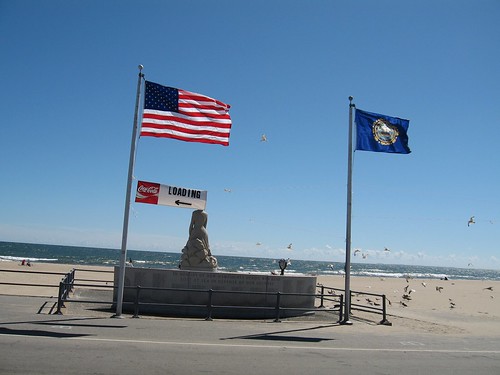Over at the Village Voice, Jen Doll cleared it up for Svanberg: "Oh BP, when will you learn? It’s not small people, it's Little People! Jeez."
From "BP boss 'sorry' about 'small people’ remark", MSNBC, June 16, 2010The following is an article by Australian Edward Kanze, who has given permission to reprint his article, "Pelicans Fraught With Oil and Irony". Thank you Ed! The photos were taken my me, and are of the Maine coastline, as yet unsullied.
Pelicans Fraught With Oil and Irony
By ED KANZE
The brown pelican, surely the most handsome member of its ungainly feathered tribe, had been considered an endangered species by the U.S. Fish and Wildlife Service for ten years. DDT, disturbances to nesting grounds, and competition from fishing boats had come close to putting the yellow, white, brown, and gray bird permanently out of the seafood business. The banning of DDT and the creation of sanctuaries such as Gulf Islands National Seashore had helped turned things around, and when I arrived, brown pelicans were on the rise.
I'll never forget my first sighting of these extraordinary birds: a line of them flying in formation low over the water, jowly faces contrasting with the grace with which the birds flapped their broad, two-toned wings (seven feet or thereabouts from wingtip to wingtip). It was evening. Lemon-yellow sunlight slanting over the gun-metal surface of the Gulf illuminated the birds theatrically from above and below. Foreheads glowed gold, like incandescent light bulbs.
 Brown pelicans were not rare then, but they're weren't especially common, either. Certainly they were nowhere near as abundant as I found them twelve years later when I returned to Gulf Islands for another stint. This time I worked in the Mississippi district. Brown pelicans turned up every time I ventured near salt water. Clearly, things were looking up.
Brown pelicans were not rare then, but they're weren't especially common, either. Certainly they were nowhere near as abundant as I found them twelve years later when I returned to Gulf Islands for another stint. This time I worked in the Mississippi district. Brown pelicans turned up every time I ventured near salt water. Clearly, things were looking up.The U.S. Fish and Wildlife Service removed brown pelicans from the Endangered Species List in 2009. No one could foresee that in the spring of 2010, the world's largest oil fiasco would begin playing out in the Gulf of Mexico, and the bird would find itself hurtling toward oblivion all over again.
The most recent figures I've seen report 57 brown pelicans found oiled and dead, plus another 157 oiled but alive. These numbers likely represent a pittance of the real total. Most of the birds are probably succumbing out at sea or on remote sections of coast. It's pelican breeding season now, and breeding season for loggerhead, leatherback, hawksbill, and Kemp's ridley sea turtles, too. The timing of the gusher, which continues to spew and will go on poisoning the Gulf for decades, couldn't be worse.
 It's hard for me to picture that coastline today. During my time as a ranger at Gulf Islands in 1980 and from 1992-1995, the shorelines were cluttered in places with beached flotsam, most of it from shrimpers and fishing boats. Still, the sugar-white sand of the beaches was a marvel to behold, as was that most elegant and noble of grasses, the sea-oat, which held the sand in its roots and made possible the growth of dunes.
It's hard for me to picture that coastline today. During my time as a ranger at Gulf Islands in 1980 and from 1992-1995, the shorelines were cluttered in places with beached flotsam, most of it from shrimpers and fishing boats. Still, the sugar-white sand of the beaches was a marvel to behold, as was that most elegant and noble of grasses, the sea-oat, which held the sand in its roots and made possible the growth of dunes. News from friends along the Gulf has taken me on a roller-coaster ride. First there was horror and anger. Then there was hope, as the situation seemed less dire than it might have been. Then the oil from British Petroleum's undersea geyser continued pouring tanker-loads of liquid fossil sunshine into the water every day, and the fumes and the floating menace and the corpses began coming ashore.
Everyone is asking the same question. Where do we go from here? Triage comes first. Over time, the environmental, economic, psychological, and political ramifications will be profound. If we can't stuff this genie back in the bottle, we certainly must make sure that all the other genies remain where they belong. This will require rooting out the toxic influence of oil money in Washington---do-able, we of goodwill must believe, yet no easy task.
Edward Kanze June, 2010
Copyright Edward Kanze, 2010
No comments:
Post a Comment